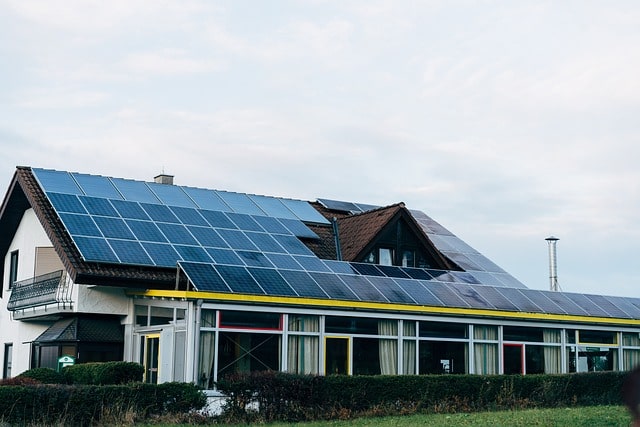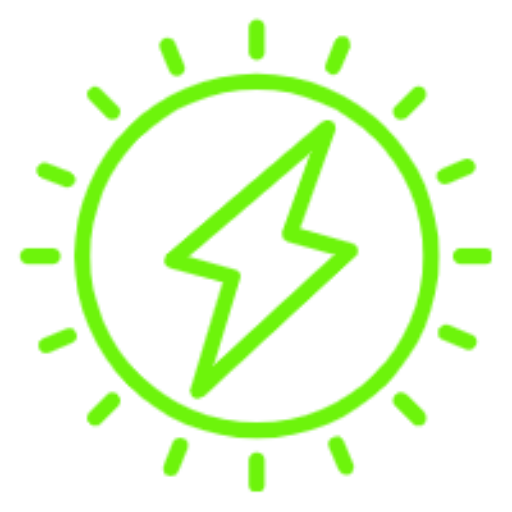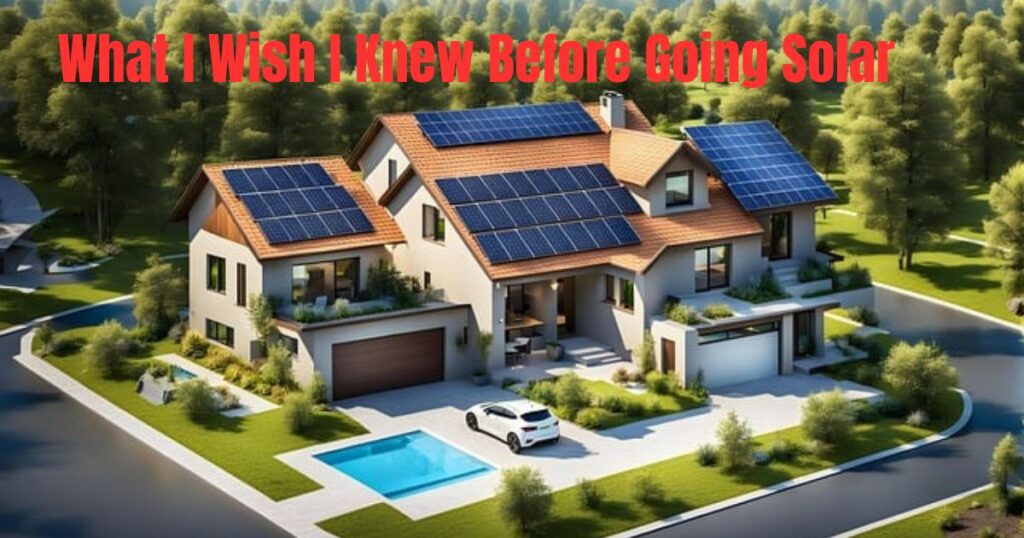Last updated on March 5th, 2025 at 03:02 am
1. Benefits of solar power motivates you to go solar
2. Conduct an energy audit to understand your household’s needs, helping determine the right solar system size.
3. Consider your roof’s orientation and shading for efficient solar panel placement and increased energy production.
4. Be aware of local regulations and incentives, as they play a crucial role in the overall financial aspects of your solar investment.
5. Consider the full cost of installation, explore financing options, and calculate how much you can save during the lifespan of your solar system.
Benefits of solar power #1
Understanding the benefits of solar power is crucial in today’s world for several compelling reasons. Here are key motivations for why someone should be knowledgeable about the advantages of solar energy:
Renewable and Sustainable
Solar power is a completely renewable energy source, relying on the sun’s inexhaustible supply of energy. This makes it a sustainable solution for the long term, reducing dependence on finite fossil fuels.
Reduction in Electricity Bills
One of the most tangible advantages of solar power is the significant reduction in electricity bills. By generating your own electricity, you can offset or even eliminate your reliance on grid power, leading to substantial savings over time.
Low Environmental Impact
Solar energy production has a minimal impact on the environment compared to traditional energy sources. It produces no greenhouse gas emissions during operation, contributing to cleaner air and a reduced carbon footprint.
Government Incentives and Rebates
Many governments incentivize the adoption of solar power through tax credits, rebates, and other financial benefits. Taking advantage of these incentives not only lowers the upfront costs but also accelerates the return on investment.
Energy Independence
Solar power grants individuals and businesses a degree of energy independence. By generating your own electricity, you become less reliant on external sources and are better equipped to withstand power outages or disruptions.
Increased Property Value
Homes and businesses equipped with solar panel installations often see an increase in property value. The prospect of lower energy costs and environmental sustainability can make a property more attractive to potential buyers.
Job Creation and Economic Growth
The solar industry is a significant driver of job creation and economic growth. The installation, maintenance, and manufacturing of solar components contribute to employment opportunities in various sectors.
Your energy consumption #2
Before you make the leap into solar energy, it’s like preparing for a big journey – you need to know where you’re starting. That’s where an energy consumption audit comes in.
To get an idea about your energy consumption, you should take a closer look to your electricity bill. Based on the Energy Information Administration (EIA) report, the average U.S. residential electric-utility customer purchased 10,791 kilowatt-hours (kWh) of electricity annually in 2022, averaging around 889 kWh per month.
To ensure a well-planned energy strategy for your household, it’s essential to consider both seasonal variations and the specific times of day when your energy consumption peaks.
Start by examining your seasonal energy demands. During different times of the year, your energy usage might fluctuate due to heating or cooling needs. For example, winter might see increased energy usage for heating, while summer could involve higher electricity consumption for cooling. Understanding these seasonal patterns helps tailor your energy plan to meet specific climate-related demands.
Next, pay attention to your daily energy consumption throughout the day and night. Identify the periods when energy usage is at its highest. This analysis might reveal morning and evening peaks when household members are getting ready for the day or engaging in various activities for everyday stuff. The hum of the fridge, the glow of your computer – these are the daily actors in your energy story. Knowing their routines helps you understand your average daily energy needs.
Why these information are important? Well, it’s the foundation for figuring out the right size for your solar panel system.
How many solar panels do you need? #3
Determining the number of solar panels you need depends on several factors, including your energy consumption, the wattage of the solar panels, and the amount of sunlight your location receives.
The formula to calculate the number of solar panels you need can be found here

Determining whether solar energy is the right choice for your house involves considerations such as, location, sunlight exposure, orientation and shading.
Location and Sunlight Exposure
Evaluate your house’s location and the amount of sunlight it receives. Solar panels work best in areas with ample sunlight. If your property has good sun exposure throughout the day, it enhances the efficiency of solar energy production.
Roof Orientation and Tilt
The orientation of your house plays a pivotal role in maximizing the efficiency of solar panels. Ideally, solar panels should face south in the Northern Hemisphere or north in the Southern Hemisphere to capture the maximum sunlight throughout the day.
The optimal tilt angle for solar panels is typically determined by the geographical location of the installation and its intended purpose. In general, for fixed solar installations, the ideal tilt angle is often close to the latitude of the location.
During the summer months, the optimal tilt angle for solar panels is typically your latitude minus 15 degrees. Conversely, in winter, the recommended tilt angle is your latitude plus 15 degrees. These adjustments account for the changing position of the sun throughout the seasons, maximizing the absorption of sunlight and optimizing the energy output of the solar panels.
Shading
Shading is a crucial aspect that can significantly affect the performance of solar panels. Even a small amount of shading, whether from nearby trees, buildings, or other obstructions, can diminish the overall output of your solar system.
Conduct a thorough analysis of potential shading issues throughout the day and across seasons. This includes considering any upcoming construction projects or the growth of nearby vegetation that could cast shadows on your solar panels.
Regulations and permit#5
Local regulations often dictate the permitting process for solar panel installations. Homeowners may need to obtain permits before installing solar panels to ensure compliance with safety and building codes. Understanding and navigating these requirements are essential steps in the installation process.
Prior to the installation of solar panels, it is imperative that your chosen solar installer thoroughly examines and complies with a set of essential codes and standards. These include the National Electrical Code (NEC) or NFPA 70, International Building Codes (IBC), International Fire Codes (IFC), and structural engineering codes such as those outlined by the American Society of Civil Engineers (ASCE). This comprehensive evaluation ensures that the solar installation aligns with established safety, construction, fire prevention, and structural engineering guidelines for your home or building.
Checking zoning regulations is a crucial step to undertake before proceeding with the installation of solar panels. It may vary across states and localities, impacting the placement and aesthetics of solar panels. Some areas may have restrictions on the size or visibility of solar installations. Being aware of these zoning guidelines helps homeowners align their solar plans with local expectations.
Solar panels incentives and rebates#6
Diving into solar energy in the United States unveils a realm of financial advantages through a blend of federal and state incentives. At the forefront is the Federal Solar Investment Tax Credit (ITC), offering a substantial 26% tax credit for solar systems installed in 2020 and 2021. The intrigue intensifies as Congress, in August 2022, extended the ITC, elevating it to a noteworthy 30% for installations spanning from 2022 to 2032. Notably, systems installed on or before December 31, 2019, also qualified for the elevated 30% tax credit.
However, the ITC journey takes a calculated descent, stepping down to 26% for systems installed in 2033 and further diminishing to 22% for installations in 2034. A pivotal moment arises in 2035, signaling the potential expiration of the tax credit unless rejuvenated by Congressional action.
Beyond the federal realm, states contribute to the solar allure with an array of incentives. State tax credits, cash rebates, Performance-Based Incentives (PBIs), and Feed-in Tariffs (FITs) add layers of financial encouragement for solar adopters. Property tax exemptions and the intriguing world of Solar Renewable Energy Certificates (SRECs) further sweeten the deal, making the economic transition to solar energy all the more compelling.
Costs of solar panel installation#7
The costs of solar panel installation can vary based on several factors, including the size of the solar system, the type and quality of solar panels, labor costs, and additional components such as inverters and mounting structures. Here is an example of the cost of solar panels for a U.S. resident whose average energy consumption is 889 kWh per month:
Cost of Solar Panels:
-
- Average cost of monocrystalline solar panels per watt: $1.50
-
- System size (for an average household consuming 889 kWh/month): Need 18 solar panels of 400W
-
- Base cost of 18 solar panels: $1.50/watt * 400 watts *18 solar panels= $10,800
Additional Hardware Cost:
Inverter, battery, wiring, mounting: $5,000
Labor Cost:
Labor constitutes 10% of the total cost: 10% of ($10,800 + $5,000) = $1,580
Total Cost before Tax Credit:
Summing up the base cost, additional hardware cost, and labor cost: $10,800 + $5,000 + $1,580 = $17,380
Tax Credit Calculation:
Federal Solar Investment Tax Credit (ITC) at 30%: 30% of $17,380 = $5,214
Final Cost After Tax Credit:
Subtracting the tax credit from the total cost: $17,380 – $5,214 = $12,166
Solar panel warranty and lifespan#8
Investing in solar panels entails a focus on both lifespan and warranty considerations. High-quality solar panels are designed to last between 25 to 30 years, contributing to prolonged energy generation and environmental benefits.
Factors influencing their longevity include material quality, manufacturing standards, and environmental conditions. Optimal installation and maintenance further enhance the potential for a lengthy and efficient solar panel lifespan.
Solar panel warranties consist of performance and product components. Performance warranties, spanning around 25 years, ensure a guaranteed level of energy production.
If panels fall below this benchmark, manufacturers commit to replacement or reimbursement. Product warranties, typically lasting between 10 to 25 years, cover defects and malfunctions, ensuring free repairs or replacements for the specified duration.
When evaluating warranties, careful scrutiny of terms is vital. Comprehensive warranties covering labor and replacement parts offer more extensive protection. Understanding the conditions for reimbursement or replacement is crucial for navigating potential warranty claims effectively.
Quality selection is paramount. Opting for panels from reputable manufacturers such as, SunPower, LG Solar, Canadian Solar….. known for reliability and durability often results in extended warranties. This choice not only ensures better performance but also reflects a commitment to the long-term success of a solar energy system.
Payback period #9
To calculate the solar payback period, we can use the following formula:
Payback Period=(Total Cost of Solar Installation/Annual Savings on Electricity)
Annual Savings=Average Energy Consumption × Average Cost of Electricity×12 months/year=$2,453.64
Payback Period=$12,166/$2,453.64≈4.95 years or 5 years
How much can you save with solar power?#10
The amount of energy one can save with solar power depends on various factors, including the system’s capacity, efficiency, and local sunlight conditions.
If your average energy consumption is 889 kWh per month and you need 18 solar panels, then your payback period of the cost of your solar panel system is 5 years. The average lifespan of a solar panel system is 25 years. Then you can save 20 years of your electricity bills after 5 years of payback period.
If we follow the previous calculations, your annual savings is = $2,453.64
In 20 years, you can save=20*$2,453.64= $49,072.8.

Maintenance and cleaning #11
Regular Inspection
Regular visual inspections are the first line of defense. Periodically check for any physical damage, loose connections, or signs of wear. Ensure that the mounting structure is secure and hasn’t shifted over time. Early detection of issues can prevent more significant problems down the line.
Monitoring Energy Output
Utilize the monitoring tools provided by your installer to keep track of your system’s energy output. Sudden drops in energy production could indicate potential issues that require investigation. Monitoring allows you to address problems promptly and maintain optimal efficiency.
Cleaning Procedures
While solar panels are designed to be self-cleaning to some extent, occasional cleaning can enhance their efficiency. Use a soft brush or sponge along with a mild cleaning solution, such as a mixture of water and dish soap. Avoid abrasive materials that could scratch the surface of the panels. Cleaning should be performed during periods when the panels are not actively generating electricity, typically early morning or late evening.
Timing for Cleaning
Cleaning during the day when panels are hot could lead to thermal shock and potential damage. Plan your cleaning sessions during cooler parts of the day to ensure the safety of both yourself and the panels.
Addressing Residues
Promptly remove bird droppings, leaves, and other debris that may accumulate on the panels. These can create shadows and reduce the efficiency of the panels. Use a gentle stream of water to wash away residues without causing damage.
Snow Removal
In snowy climates, gently remove accumulated snow to expose the panels. However, exercise caution to avoid damaging the panels or slipping on icy surfaces. Use soft tools and avoid harsh scraping that could harm the panel surface.
Professional Maintenance
Consider scheduling periodic professional inspections and maintenance. Trained technicians can identify potential issues that may not be apparent during routine checks. They can also perform tasks such as re-tightening connections or replacing damaged components.
Battery storage consideration #12
Considering battery storage for your solar panel system offers several compelling advantages that enhance the overall efficiency, reliability, and sustainability of your energy setup.
Energy Independence
Battery storage provides a degree of energy independence by allowing you to store excess energy generated during peak sunlight hours. This stored energy can then be used during periods of low sunlight or at night, reducing reliance on the grid and promoting self-sufficiency.
Energy Resilience
In the event of grid outages, battery storage enables your solar panel system to continue supplying power to critical loads. This enhances energy resilience, ensuring that essential appliances and systems remain operational even during power disruptions.
Maximizing Solar Generation
Solar panels generate the most energy during peak sunlight hours, which may not align with peak energy consumption times. Battery storage allows you to capture and store surplus energy during sunny periods for later use, maximizing the utilization of your solar generation.
Cost Savings
By storing excess solar energy, you can reduce reliance on grid power during times when electricity rates are higher. This can lead to significant cost savings over time, as you draw less energy from the grid during peak-rate periods.
Grid Support and Time-of-Use Optimization
Battery storage enables you to participate in grid support programs and take advantage of time-of-use (TOU) electricity pricing. You can store energy when rates are low and discharge it during peak-rate periods, contributing to grid stability and optimizing your energy expenses.
Emergency Backup Power
Battery storage systems can serve as a reliable source of emergency backup power during unforeseen circumstances, ensuring that critical appliances and systems remain operational when the grid is unavailable.
Smooth Transition to Off-Grid Living
For those considering a transition to off-grid living, battery storage is a crucial component. It allows you to store and manage your solar-generated energy, providing a consistent power supply independent of external grid connections.
Wrapping up!
Frequently Asked Questions (FAQs)

